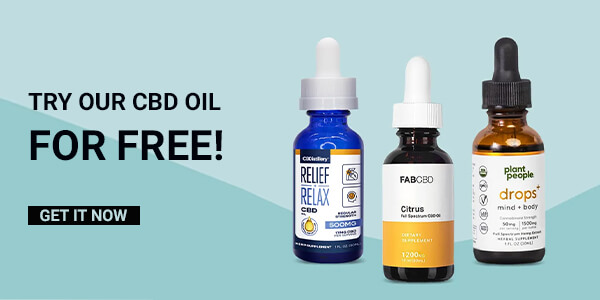Like most packaged products, cannabidiol (CBD) oil has an expiry date. The period when CBD oil stays good depends on multiple factors, including storage, packaging, classification, and quality of the initial substance. Additionally, some elements like heat, extreme humidity, and cold effect CBD oil storage life. This blog explores its shelf life.
Like most packaged products, cannabidiol (CBD) oil has an expiry date. Before this period, your product is most effective and safe. Nonetheless, it becomes challenging for many people to determine storage life. Cannabis products or CBD oil longevity depends on multiple factors. They include storage, packaging, classification, and quality of initial substance. Appropriate cannabidiol product storage preserves various natural ingredients’ cannabinoid profile and quality. According to Tkaczewska (2020), heat, extreme humidity, and cold elements might lower cannabidiol oil shelf life. Thus, preventing your product from these elements conserves the natural plant properties. This blog investigates CBD oil storage life.
Does Cannabidiol Oil Expire?
When individuals buy any cannabidiol product, it must have a label showing the expiry date. Nevertheless, this date should not be a decisive guide to the maximum period required to utilize it. Proper CBD oil storage serves an essential role in defining whether consumers can utilize the product after the expiration date. Air, heat, and light are the major threats to CBD oil storage life. Other essential factors to consider include:
Ingredients
Every constituent contains different storage life. Thus, limited ingredients in CBD oil are better than using excess amounts. For this reason, confirm the certificate of analysis (COA) and analyze constituents for every product. This ensures that your products do not contain heavy metals, molds, and pesticides.
Product Standard
Premium quality cannabidiol oil has a longer shelf life because of high hemp quality and growth conditions.
Packaging
Professionals discourage companies from storing their products in transparent glass vessels. In this regard, high-quality trademarks utilize opaque bottles to protect cannabidiol oil from direct sunlight.
Extraction
The CBD oil extraction method affects the end product’s quality by influencing cannabinoid stability.
Dosage and consumption frequency signifies when a cannabidiol product expires. Additionally, although certain extracts and infusions might experience degradation within a short duration, others stay usable and fresh indefinitely. Van De Donk et al. (2019) noted that the average cannabidiol oil storage life is between one to two years, depending on storage quality. Replace the cannabidiol oil after this period elapses. This is because active constituents might have degraded their efficacy.
How Long does Cannabidiol Last?
Most experts suggest that CBD oil lasts for 2 years when stored under appropriate conditions. A biological molecule is vulnerable to degradation or change. Exposing cannabidiol in ethanol or chloroform to light causes degradation within some weeks. Storing this product in transparent bottles at room temperature stimulates degradation. Also, products that have undergone low processing, such as full-spectrum cannabidiol oil, might have longer storage life than flavored ones. Any extra constituent incorporated into your product might possess expiry dates which reduce the overall product’s shelf life. Various extraction methods involving butane and different solvents might produce less stable and more processed products with lower shelf-life.
The Impact of CBD Oil Extraction Method on Shelf Life
Although cannabidiol extraction techniques are not standardized, there exist some advantages and disadvantages for each method. Most might considerably impact the cannabidiol’s storage life.
Carbon Dioxide Extraction
Lazarjani et al (2021) showed that carbon dioxide is the standard CBD oil extraction method. For this reason, it generates the purest and premium quality merchandise rich in phytochemicals, flavonoids, terpenes, and cannabinoids. The carbon dioxide method involves the utilization of pressurized and closed chambers. Every chamber constitutes a unique component. For instance, one chamber contains carbon dioxide (CO2) while another hemp plant material. When carbon dioxide is forced into the hemp plant material chamber, the cannabidiol isolates from this plant. Then, the cannabinoid compound is extracted in cannabidiol oil potent form. Generally, products manufactured through this technique have superior usability for a prolonged period because of the high CBD amount.
The Best Method to Store Cannabidiol Oil
The CBD oil shelf life is determined by storage quality. For instance, air, light, and heat exposure influence its storage life significantly. Therefore, proper storage is important to utilize your product for the maximum period. Also, appropriate storage discourages oil degradation and chemical proliferation that can damage your product. In general, temperature, direct sunlight, and moisture can influence the period cannabidiol oil lasts. Below are some fundamental storage guidelines:
Store Cannabidiol Product Away from Heat and Light
Hazekamp (2016) reported that consumers should store cannabidiol oil in dark, dry, and cool spots for optimum freshness and prevent it from degradation. Avoid storing your product on a ledge or shelf near a window where sunlight penetrates or cabinets where appliances generate heat. Store all cannabidiol oils in closets or pantries that stay under 700 F. Also, some consumers show that storing these products in refrigerators elongates shelf life. Nevertheless, cannabidiol oils thicken if you expose them to conditions with extreme cold. In such situations, individuals should warm it before using it. Freezing might produce cloudiness and elevate thickness. Freezing is perfect for people wanting to maximize CBD oil’s storage life. Consult the company that offers cannabidiol oil or study their instructions because various products might have distinct guidelines. Wrapping your product with aluminum foil protects it from direct sunlight. Many cannabidiol oils are available in airtight and dark-colored bottles.
Conclusion
Proper CBD oil storage makes a significant difference in longevity and potency. You should take the required procedure to preserve your product in places where its constituents will be preserved. Medical experts encourage consumers to store CBD products in dark, dry, and cool places. Some people also prefer wrapping CBD oil-carrying bottles using aluminum foil and keeping them inside the freezer or fridge. In general, cannabidiol oil lasts between one and two years. As time elapses, the oil concentrates start changing, and your product becomes darker. Ensure that you purchase high-quality products from reputable companies. Specifically, choose those with COA labels and carbon dioxide extracted.
References
Hazekamp, A. (2016). Evaluating The Effects Of Gamma-Irradiation For Decontamination Of Medicinal Cannabis. Frontiers In Pharmacology, 7, 108.
Lazarjani, M. P., Young, O., Kebede, L., & Seyfoddin, A. (2021). Processing And Extraction Methods Of Medicinal Cannabis: A Narrative Review. Journal Of Cannabis Research, 3(1), 1-15.
Qamar, Torres, Parekh, & Falconer, (2021). Effects Of Ethanol On The Supercritical Carbon Dioxide Extraction Of Cannabinoids From Near Equimolar (THC And CBD Balanced) Cannabis Flower. Separations, 8(9), 154.
Tkaczewska, J. (2020). Peptides And Protein Hydrolysates As Food Preservatives And Bioactive Components Of Edible Films And Coatings-A Review. Trends In Food Science & Technology, 106, 298-311.
Van De Donk, T., Niesters, M., Kowal, M. A., Olofsen, E., Dahan, A., & Van Velzen, M. (2019). An Experimental Randomized Study On The Analgesic Effects Of Pharmaceutical-Grade Cannabis In Chronic Pain Patients With Fibromyalgia. Pain, 160(4), 860.
Kristina Shafarenko is a relationship and health and wellness psychologist and a part-time freelance lifestyle writer covering health and fitness, sex, sexual wellness, and relationships. When she’s not writing, you can find her planning her next getaway, taste-testing every coffee spot in sight, and lounging at home with her cat, Buddy.
- Kratom Capsules By Just Kratom-Capsules of Kratom Bliss: Navigating My Journey with Just Kratom - October 2, 2023
- 6 Reasons to Try CBD Oil - February 4, 2023
- CBD 101: how long does cbd oil stay good? - October 25, 2022








